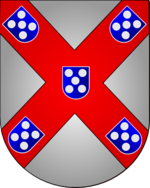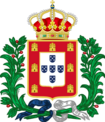
The title Duke of Braganza in the House of Braganza is one of the most important titles in the peerage of Portugal. Starting in 1640, when the House of Braganza acceded to the throne of Portugal, the male heir of the Portuguese Crown were known as Duke of Braganza, along with their style Prince of Beira or Prince of Brazil. The tradition of the heir to the throne being titled Duke of Braganza was revived by various pretenders after the establishment of the Portuguese Republic on 5 October 1910 to signify their claims to the throne.

Teodósio II, 7th Duke of Braganza was a Portuguese nobleman and father of João IV of Portugal. He is known for his allegiance to King Philip I of Portugal.

The Most Serene House of Braganza, also known as the Brigantine dynasty, is a dynasty of emperors, kings, princes, and dukes of Portuguese origin which reigned in Europe and the Americas.
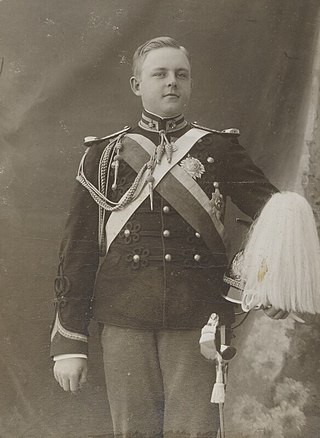
DomLuís Filipe, Prince Royal of Portugal, Duke of Braganza was the eldest son and heir-apparent of King Carlos I of Portugal. He was born in 1887 when his father was still Prince Royal of Portugal and received the usual style of the heirs to the heir of the Portuguese crown: 4th Prince of Beira at birth, with the subsidiary title 14th Duke of Barcelos. After his grandfather King Luís I of Portugal died, he became Prince Royal of Portugal with the subsidiary titles 21st Duke of Braganza, 20th Marquis of Vila Viçosa, 28th count of Barcelos, 25th count of Ourém, 23rd count of Arraiolos and 22nd count of Neiva.
Prince of Beira is a title traditionally granted to the heir apparent to the throne of Portugal. The title's original use that it be granted on the eldest daughter of the reigning monarch of Portugal. Tied with the title of Prince of Beira, is Duke of Barcelos, as heir to the Duke of Braganza and Prince of Brazil. The title's name has its origins in the Beira province in central Portugal.

The Duchy of Braganza has been the fief of an important Portuguese noble family: the House of Braganza, and is one of the most important Dukedoms of Portugal. Created in 1442 by King Afonso V of Portugal for his uncle Afonso, Count of Barcelos, it is one of the oldest fiefdoms in Portugal.
The Portuguese succession crisis of 1580 emerged as a result of the deaths of young King Sebastian I of Portugal in the Battle of Alcácer Quibir in 1578 and his successor and great-uncle Henry I in 1580. As Sebastian and Henry lacked immediate heirs, a dynastic crisis unfolded, marked by internal conflicts and external contenders vying for the Portuguese throne. Ultimately, Philip II of Spain succeeded Henry I as King of Portugal, uniting the Portuguese and Spanish Crowns in the Iberian Union. This personal union endured for 60 years, during which the Portuguese Empire faced decline and global challenges, notably the Dutch–Portuguese War.
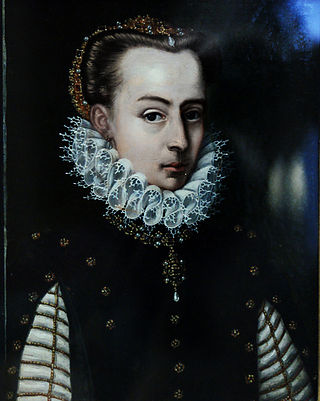
Infanta Catherine of Portugal, Duchess of Braganza by marriage was a Portuguese infanta (princess) claimant to the throne during the Portuguese succession crisis of 1580.
Prince of Brazil was the title held by the heir-apparent to the Kingdom of Portugal, from 1645 to 1815. Tied with the title of Prince of Brazil was the title Duke of Braganza and the various subsidiary titles of the Dukedom of Braganza.

DomTeodósio, Prince of Brazil, Duke of Braganza was the eldest son of John IV of Portugal and heir apparent to the Portuguese throne from 1640 until his death. In 1645, he was created Prince of Brazil and 9th Duke of Braganza.
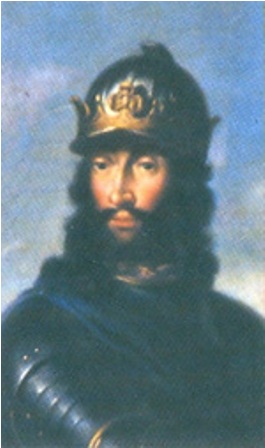
Dom João I of Braganza was the 6th Duke of Braganza and 1st Duke of Barcelos, among other titles. He is known for pushing the claims of his wife, Infanta Catherine of Guimarães, to the throne of Portugal.
Constable of Portugal was an office created by King Ferdinand I of Portugal in 1382, to substitute the High Standard-bearer (Alferes-Mor) as the head of the Portuguese Military. It was also referred as the Constable of the Kingdom.

Afonso de Braganza, Prince of Beira, is the eldest son of Duarte Pio, Duke of Braganza and Isabel de Herédia. Being the heir of the House of Braganza, he bears the courtesy title of Prince of Beira.

Count of Barcelos is a title of nobility, the first to be granted in Portugal. It was created in 1298 by king Denis I and initially it was a non hereditary title, although most of the holders belonged to the Teles de Menezes family. It was only after the death of the 6th Count, when it was granted to Nuno Álvares Pereira, that the title became hereditary. The 8th Count of Barcelos was created Duke of Braganza in 1442, by his nephew king Afonso V, and his descendants rose to the Portuguese throne after the country regained its independence from Spain in 1640.

Dom Teodósio I of Braganza was the 5th Duke of Braganza, among other titles. He is known for ceding the title of Duke of Guimarães to Infante Duarte of Aviz, alongside some of the wealth and properties of the House of Braganza.
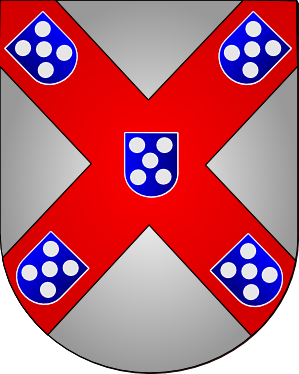
The title Marquis of Vila Viçosa was created by royal decree, dated May 25, 1455, by King Afonso V of Portugal), to Fernando of Braganza, second son of Afonso, 1st Duke of Braganza.

Count of Ourém is a Portuguese title granted in 1370 by King Fernando I of Portugal, to Dom João Afonso Telo, uncle of Queen Leonor Teles. Later he also became the fourth Count of Barcelos.

Peter V, nicknamed "the Hopeful", was King of Portugal from 1853 to 1861 as well as a German prince of the House of Braganza-Saxe-Coburg and Gotha.
The Ducal Palace of Vila Viçosa is a royal palace in Portugal, located in the civil parish of Nossa Senhora da Conceição, in the municipality of Vila Viçosa, in the Alentejo, situated about 150 km east of the capital Lisbon. It was for many centuries the seat of the House of Braganza, one of the most important noble houses in Portugal. Braganza was the ruling house of the Kingdom of Portugal from 1640 until 1910, when King Manuel II, titular head of the family, was deposed in the 5 October 1910 Revolution which brought in a Republican government.
